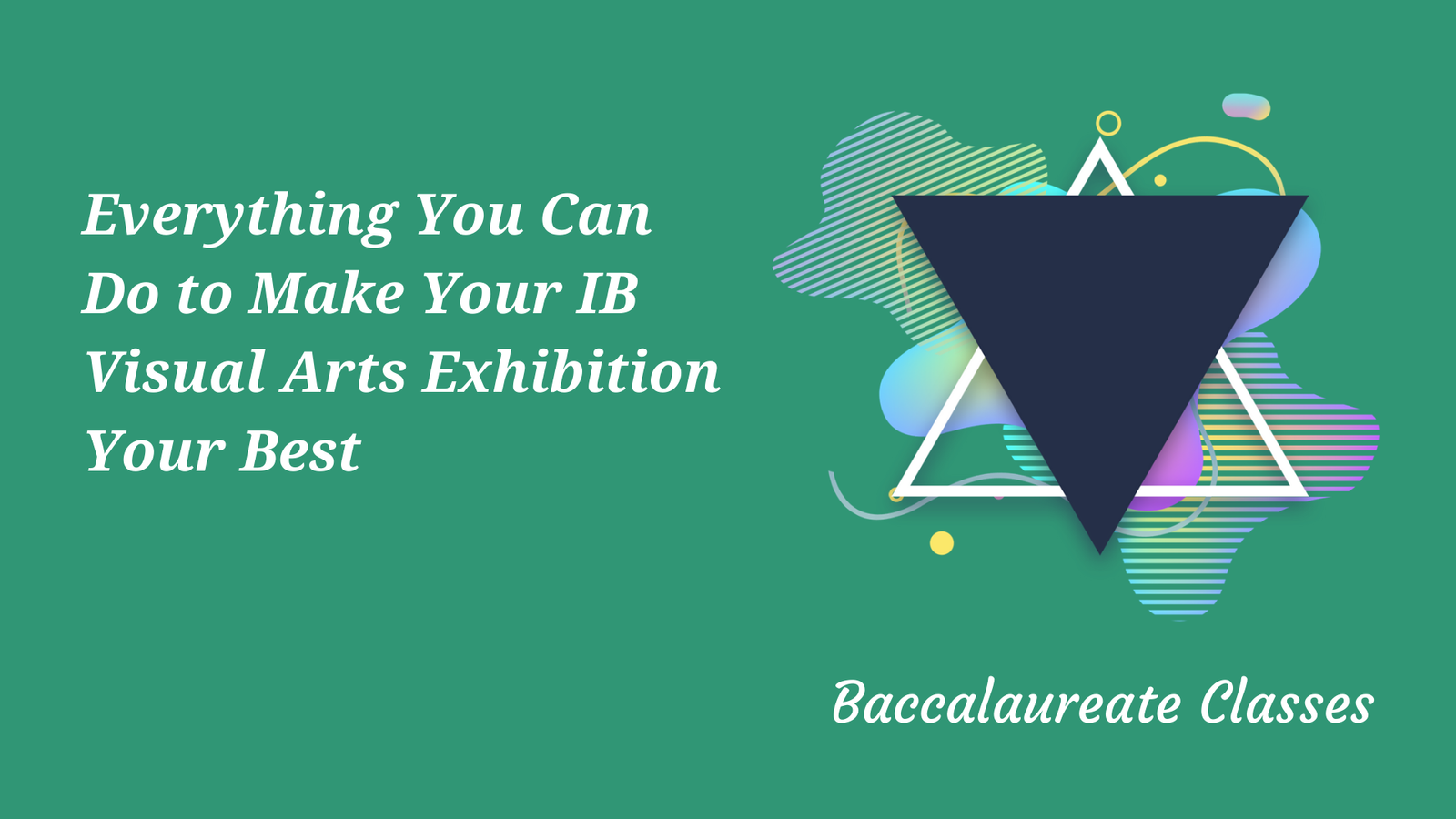OUR BLOG
Everything You Can Do to Make Your IB Visual Arts Exhibition Your Best
Exhibition is 40% of the Visual Arts grade but is also an Internal Assessment. Since IAs are moderated, exhibition can also be very subjective. These tips are written from personal experience as a student who scored 7 points and as a mentor to many other VA students and therefore will help you score your best.
1. MAKE A LIST – A PLAN
The very first thing to do is decide a theme. Theme is a broad idea which all of the artworks are based on. Within this theme you have concepts. Concepts are like pieces of a puzzle that join together to form the theme. Choose a theme you are passionate about. Reflect on what makes you jump up and speak out in a way no other idea would. What do you want to show in your art? The theme should not be too broad but broad enough to be able to make a list of at least 15 distinguishable yet connected concepts. Make sure your concepts are connected to the theme you have chosen. Each concept should show a different side of the same theme, be completely different from each other yet depend on the each other for a complete understanding. This list will help you feel confident and help you save time when one concept or idea doesn’t work. You will have ample back up concepts to stem your ideas from if you ever get stuck. You style will develop as you turn each of these concepts into your artworks. However, it is also possible that within the span of two years this list completely changes. Nevertheless, making this list will provide you with a distinct road that you know will get you a complete successful exhibition.
Your IB Visual Arts tutor can help you verify and guide you through the list but in the end, it is yours.
2. COHERENT BODY OF WORKS
The list above will help you achieve a thematically coherent body of works. While the criterion needs either thematic or stylistic relationship between each of your works, it is advisable to have both since the competition and the level of work the examiners receive is very high. Use of a color in different contexts but in most of your works if relevant to your theme can help establish a stylistic relationship. The thought processes behind each work can also establish stylistic links. How are you using objects as symbols or metaphors? Even if the painting is realistic or impressionistic, does it look surreal? You develop your style as and when you make each of your works and therefore stylistic relationships cannot be very well defined beforehand. It is important to establish them after making all your artworks and mention it in your curatorial rationale. Your exhibition should not look like a series of similar works. However, the work should speak for themselves yet make it obvious that one artist - you – have made them. Consult your IB tutor if you are not sure if you have achieved this. Another important aspect of this criterion is to make sure that the media, processes and use of imagery is consistent with why you made that work. If you used an object and made it a symbol, it should be obvious why. This part of this criterion is very similar to the process portfolio criterion. Hence, if you did that well this would not be very difficult.
3. SELECTION OF ARTWORKS
When you have made all your artworks, select which ones to exhibit carefully. For SL, you need 4-7 artworks while for HL, you need 8-11 artworks. It is not always the best idea to have the minimum required artworks unless you are absolutely confident in your skill. I would suggest exhibiting 6 or 10 artworks respectively. Do not hesitate to consult your IB tutor or Visual Arts tutor for suggestions. Choose them so that they represent your theme best and fulfill the following criterion:
a) TECHNICAL COMPETENCE
Each of your works that you exhibit should display a high level of skill in whichever medium or technique that you have chosen. The use of a particular technique, media and its application or manipulation should yield a very high level of result in terms of representing and portraying your intention and the meaning behind the work. If the level of skill is adequate, choose to include it in your exhibition only if it is a strong display of the next criterion.
b) CONCEPTUAL COMPETENCE
Each of your works included in the exhibition should display a well thought out and exceptional portrayal of your concept and intention. There should be use of complex imagery, symbols or metaphors interpreted and represented by you in a different yet personal way. There should be originality in your portrayal of the theme or concept chosen. This criterion is very hard to judge yourself. However, a good question to ask would be – is there any other better way of using imagery or portraying this particular concept? Asking peers and your IB Tutors can be a good start too. Moderators mark this criterion not only on the basis of how your work looks but also what you have written in your exhibition texts.
4. EXHIBITION TEXTS
Exhibition texts are crucial in understanding the level of conceptual competence and the coherence in your works. Moderators can tell if your intended effect or portrayal of concept is obvious in your work using exhibition texts. In your exhibition text, besides the title, size and medium of your artwork, include a brief context of the artwork, artists who inspired you and connection to other works, previous work or the overall theme. This might seem a lot of put in under 500 characters with spaces, however, it is possible with concise and clear language. Ask your IB online tutor for help if you need to reduce characters of the Visual Arts Exhibition texts.
5. CURATORIAL RATIONALE
This section is all about consolidating ideas and representing them. Start by talking about why you chose the theme and what are the concepts, issues and ideas you have explored. Any personal experiences involved in this? Move on to clearly justifying your selection of works. (However, you cannot say that you chose your works because of the level of technical or conceptual competence. These criteria were mentioned as a side trick to choosing the right works.) In your curatorial rationale, think about how these artworks connect with one another and how well they fit together to represent your chosen theme. Do materials or techniques justify your selection or the concepts they represent? How do they become a coherent body of works yet have individual qualities? For HL, the third part of the curatorial rationale is viewer relationship. How has the way the work is displayed or curated contribute in explaining your concepts and ideas better? How have you considered arrangement of your works within the space available? How have you decided the sequence of works? Is there a line of thought you wished to establish in the viewer? How do you want the viewer to feel when they see your exhibit? Some of these questions can be answered in an SL curatorial rationale too if you have answers to them and words to spare. However, for an HL student, it is important to include this aspect. Talking and discussing with your online IB tutors can be helpful in answering some of these questions.
*Exhibition criteria does not mention any specific requirements for number of media or techniques required like in Process Portfolio. You may choose to have an exhibit of works in one media only but students in this case often lack exceptional technical competence and conceptual competence.
These tips should get you on your way to scoring 7 points for your IB VA exhibition. Baccalaureate Classes are always there to help if you need it!

